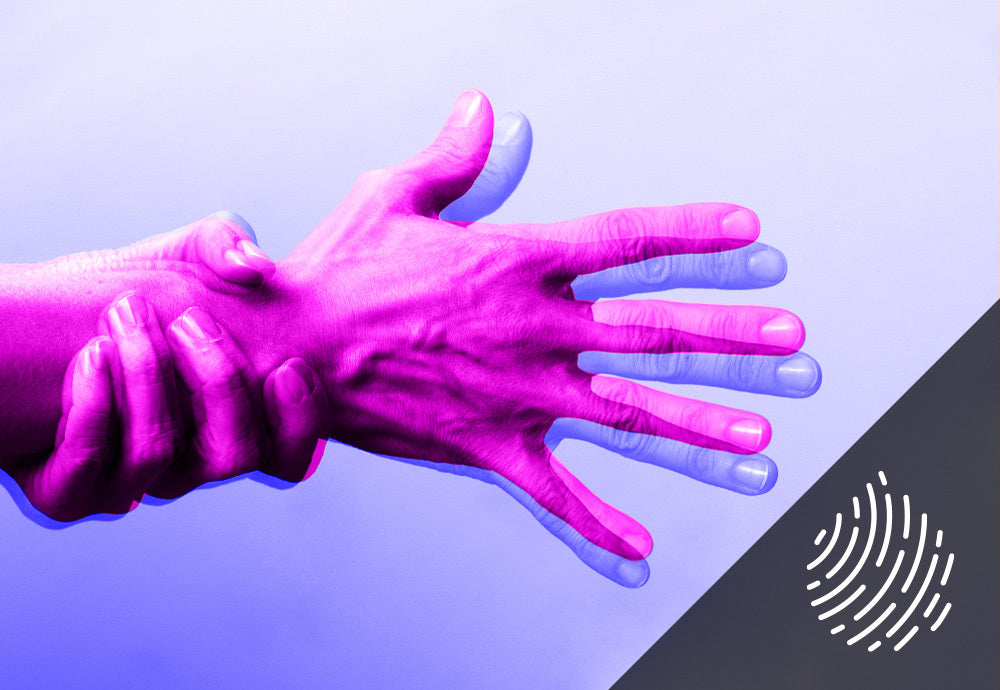Your Cart is Empty
FREE SHIPPING ON ORDERS $70+ | SATISFACTION GUARANTEED
If you or a loved one are faced with seemingly unabating pain — it can make life pretty difficult. And, finding healthful and sustainable pain management can be a daunting task (especially amidst chronic pain).
That’s why we set out to offer up some pharma-free ways to ease chronic pain. Everything from CBD to RICE and counseling to PT is on the table. Our hope is that one — or a mix — of these tried-and-true techniques brings relief.
So, keep reading for ideas on how to manage pain without more meds.

About a quarter of all US adults experience chronic pain.(1) Chronic pain is defined as a type of pain that lasts more than three months. It can be caused by an injury, arthritis, or a medical condition. The pain may be:
The opposite of chronic pain is acute pain. This type of pain occurs when you get injured and goes away as you heal.
Here are some all-too-common types of chronic pain. As you can see, it runs the gamut….
Chronic pain can have a significant impact on the quality of life of those who suffer from it.
For example, people with chronic pain may find it difficult to participate in activities they enjoy. They may also have difficulty working, sleeping, or concentrating.
In addition, chronic pain can lead to depression and other mental health issues.
And, quality of life issues don’t only impact those with chronic pain. Living with someone with chronic pain can be incredibly challenging as well — particularly for caregivers.
There are various ways to manage and cope with chronic pain, so it’s important to talk to a healthcare provider about what is best for you. Your doctor will want to assess your situation and try to figure out the cause of your pain before providing you with treatment options.
Managing chronic pain typically requires a combination of self-care and professional assistance. Keep in mind that no one treatment plan works for everyone all the time.
So, it can be helpful to jot down the things you can do on your own to help manage your symptoms — see our suggestions below for ideas. Then, you can readily draw upon your “go list” whenever you need it.
Drug-based interventions include taking ibuprofen or other NSAIDs (nonsteroidal anti-inflammatory drugs) to relieve the pain. In some cases, stronger medications — like opioids — are pulled into the mix.
While these can be valid and incredibly effective therapies, long-term use can become problematic. For example, NSAIDs can wreak havoc on your GI systems.
And, well, we can’t even begin to lay out the crisis societies are grappling with due to opioid addiction. Between 21%-29% of patients with Rx opioids for chronic pain misuse them and related deaths are staggering and on the rise in recent years.(2,3)
As you’ll see, you have lots of possibilities at your disposal for pain management techniques that don’t [purely] involve taking conventional medicines.
Many of the care approaches we offer below are versatile and scalable — fit them to your needs and evolve them as necessary. These methods also tend to have both a treatment and a preventative quality to them. (The easiest pain to address is the pain that you fend off! Less pain in the first place means less chronic pain to manage later.)
This may sound obvious — but it’s so critical it needs to be stated explicitly. Treating the pain is absolutely legitimate, no argument there. But, addressing the origin of the pain is, too.
Oftentimes, pain is a symptom of an underlying health condition, not the condition in and of itself. By resolving or managing the root cause of your pain, you might be able to minimize your chronic pain (or kiss it goodbye!).
Make sure you have a solid sleep schedule to reduce stress levels and promote healing. Try not to oversleep or wake up feeling exhausted – that’s when pain tends to worsen.
Seek support from friends, family, or a support group. Alternately, get a referral to a professional therapist that specializes in counseling for conditions like chronic pain.
Chronic pain is linked to depression and poor sleep — both of which can exacerbate the perception of the pain as well as the actual pain itself. Talking about your feelings and experiences can help you feel more connected and in control.
Get involved in physical activity or physical therapy (PT) to help reduce inflammation and improve your overall quality of life. Participating in PT may help improve mobility and function.
Some pain responds well to movement as movement facilitates blood flow, distribution of synovial fluid, loosening muscles, and more — all of which can have a palliative effect. Exercise is also great for relieving stress and anxiety and can help you sleep better. Plus, activity may provide distraction and boost your sense of being in command.
Using complementary therapies — such as massage, acupuncture, chiropractic, or yoga — could aid in preventing and treating chronic pain. Meditation and mindfulness practices have also been shown to bolster resilience, improve depression and quality of life, and lower perceptions of pain.
RICE stands for Rest, Ice, Compress, and Elevate. Depending upon the kind of pain you have, this method may be beneficial. The goal of RICE is to reduce swelling, cut pain, and hasten healing. While used primarily for treating injuries, it can be an effective weapon in your anti-chronic-pain arsenal.
Sometimes doctors recommend heat (or alternating between icing and heating) for pain. Heat helps promote circulation and can prompt tight muscles to chillax. It can assist in healing injured tissue and improving flexibility or range of motion.
What’s on the inside really does count.
A nutritious diet can supply your body with the vitamins, minerals, and macros it needs to function better and regenerate itself. On the flip side, avoiding foods and beverages that exacerbate your symptoms — like inflammatory foods — can do your body good, too.
Similarly, staying properly hydrated can keep your tissues malleable and your muscles plump — both of which can help mitigate pain.
On a related note, healthy weight management — easier to accomplish with a dietary plan of action — can help prevent and slash chronic pain.
Cannabis has been shown to reduce inflammation and have an analgesic effect, which is why so many use it as part of their pain management routine.(4) And you don’t necessarily need to have a medical cannabis card to go this route.
Research has shown that all your favorite cannabinoids — CBD, THC, and delta-8 — alleviate pain.(5) CBD and delta-8 may be more effective for chronic pain conditions, like fibromyalgia, nerve pain, and that bad back.(6,7) THC is still reputed for its pain killing abilities, but might not be a great fit for daily use because of its psychoactivity.
Generally speaking, cannabis is well tolerated by adults and has fewer and less severe side effects as many medications.
Chronic pain affects about 25% of American adults. Medicines can be effective in the treatment of pain, but often carry a lot of baggage. Plus, the best pain management approach could be one that incorporates a variety of therapeutic techniques.
And there are plenty of proven paths to non-medication-based pain relief. These include:
HELP MANAGE YOUR PAIN NATURALLY WITH CANNABIS
References

The cannabis compound CBD has been popping up in Parkinson’s disease (PD) therapy and prevention conversations, propelled by success stories from p...
Read More
CBD is one of the most popular supplements on the market today. But you're a savvy consumer. You know just because something is popular doesn’t mea...
Read More
You know delta-8 as "weed-lite" or the "chillest of the cannabinoids." But what about all the potential health benefits of this unique compound? Wh...
Read More